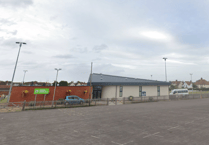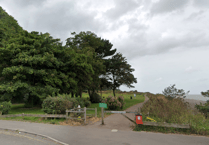PROGRESS has been made on a unique ‘Wilder Coast’ project being run by Somerset Wildlife Trust with the help of funding from the Somerset Community Foundation.
The three-year project aims to empower coastal communities to take more direct action for wildlife by wilding spaces to help deliver a coastal nature recovery network and increasing people’s involvement in coastal citizen science, recording and monitoring to inform Somerset’s ‘State of Nature’.
It is training people to take part in citizen science to record marine and coastal wildlife between Minehead and Brean to help build data which will be a key to protecting them.
The citizen scientists conduct ‘Shoresearch’ surveys of the intertidal shore, where the sea meets the land, and ‘Sea Watch’ surveys of cetaceans such as dolphins, seals, whales, and sea otters.
The project is benefiting from a £92,330 grant awarded over three years to 2025 from the Hinkley Point C Community Fund.
By raising awareness of connections between Somerset’s coast and the county’s river catchments and inland habitats, the project hopes to encourage communities to make the links between their own local habitats and the rivers and streams which eventually enter the Bristol Channel.
Although the wildlife trust manages 67 nature reserves, none of them are near Somerset’s 53 miles of coastline, leaving it historically short of marine and intertidal data.
Project manager Mark Ward said: “The sea in Somerset has always been a bit neglected because it is thought of as the ‘muddy old Bristol Channel’.
“But there is a lot going on out there.
“We have to make our communities aware of that and then engage them to help us protect the wildlife.”
Mr Ward said the wildlife trust wanted to engage with at least eight different communities during the course of the project which could be on the Somerset coast or slightly inland.
Inland, the ‘citizen science’ could include activities such as bumblebee and butterfly surveys.
Mr Ward said: “This kind of citizen science is very important.
“It helps us collect some really good baseline data of what is actually happening along our coasts.
“That could be people getting out on the seashore and seeing what is there, or encouraging people to go to headlands and harbours to spot sea mammals, which in Somerset tends to be harbour porpoise, and get a better idea of those populations.
“We have also been working with youth clubs in more disadvantaged areas.
“That has involved camping weekends on the coast that young people have found really enjoyable and rewarding.
“Foraging sessions have also been popular.
“One adult group went out for a walk with a trained forager who went through what it was possible to eat.
“Then, they went back to a café where she made tea out of different kinds of local wild herbs.
“The Hinkley Point C Community Fund grant has allowed us to move faster on all of this.
“I think that if people understand the nature that is out there then they are more likely to want to protect it.”
More information about the Wilder Coast project can be found on Somerset Wildlife Trust’s website here.




Comments
This article has no comments yet. Be the first to leave a comment.